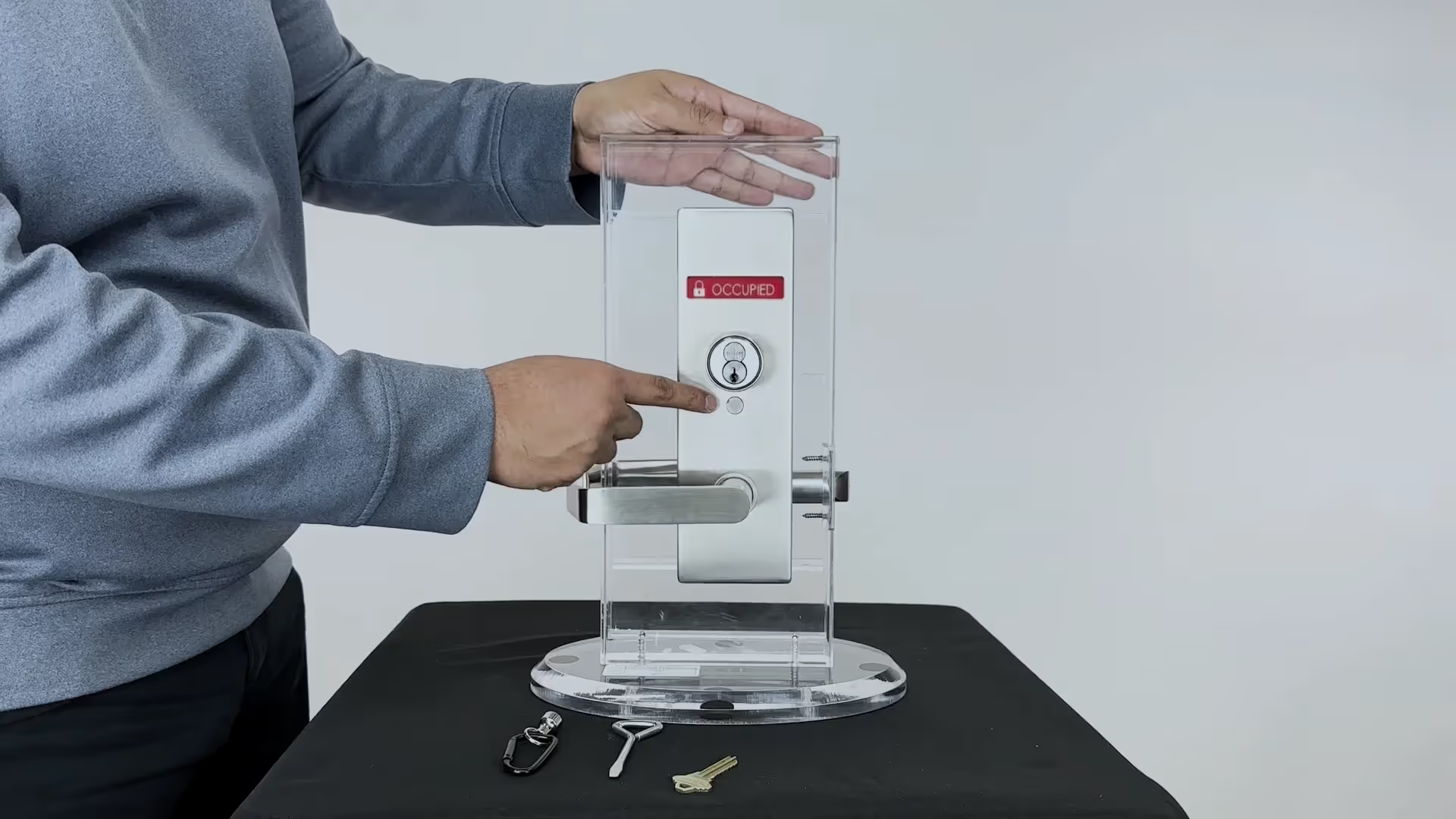Ensuring the security of the classroom is a fundamental aspect of physical security protocols and holds immense importance. It’s the last line of defense if other perimeters are compromised. While not the norm, there have been three documented instances where someone has been killed behind a locked door during a school shooting, and none of them had anything to do with the locks.
It’s an unfortunate reality that threats may not always be apparent until they’re already in the school building having breached the other perimeter layers. In such scenarios, classrooms become the final barrier of security, shielding occupants from harm. The ability to effectively and efficiently secure and control access to these spaces is critical to mitigate risks and ensure the safety of everyone within the school. Effectively securing a classroom isn’t complicated, but there are some specific requirements that need to be considered. In this post, we’ll review these requirements in detail.
Classroom Lock Requirements
Firstly, it’s important that classroom locks offer the ability to be key locked and unlocked from the outside. This functionality allows authorized personnel to gain access to the room when necessary.
Establishing clear policies and procedures for key management is needed as well. Effective key management practices guarantee that only authorized individuals have access to classroom keys, minimizing the risk of unauthorized entry. Classroom doors should always be closed and locked, with an audit process to ensure compliance.
Status indicators on locks can play a vital role in this process, providing visual confirmation of whether classroom doors are locked or unlocked. Visible lock status indicators on the outside of classroom doors also provide clarity to law enforcement, allowing them to quickly ascertain whether the door is locked or unlocked. Classroom locks should be designed this way to help law enforcement clear the building faster, enabling them to neutralize the threat as quickly as possible.
In an emergency, ease and speed of locking are key. Classroom locks should feature an easy-to-use thumb turn inside the room, and simple instructions for foolproof locking, enabling quick action during emergencies. When the body is subjected to critical incident stress, fine motor skills (such as inserting a key into a lock) greatly diminish. Using colored indicators on locked or monitored doors enhances clarity for users, making it easier to discern the lock’s status immediately, especially during high-stress situations. From the inside of the classroom, this also provides assurance that the door is locked without needing to open the door handle. According to several codes and life safety standards, doors need to provide free egress, even when the hardware is locked. This ensures that occupants can exit the classroom safely in the event of an emergency, without compromising security measures.
To maximize schools’ limited budgets, locks should be cost-effective, allowing for retrofitting without requiring replacing the door, and without compromising fire ratings. The ability to retain the same key lock cylinder simplifies key management and security maintenance.

“… the classroom door is not locked and I cannot lock it without going into the hallway … there are children in this room …”
Unnamed classroom teacher’s 911 call during the Sandy Hook School shooting
A classroom lock design should allow for familiarity and consistency for every opening. Providing both bored, and mortise lock options with identical looks and features ensures compatibility with various door types and easy operation for end users. These locks should feature ruggedized construction to withstand heavy day-to-day public use and must comply with ANSI/BHMA and ADA standards to meet regulatory requirements. Regular audits and assessments can help identify lapses or vulnerabilities in the school’s safety and security plan. Establishing a culture of safety is critical to ensure compliance with this requirement and to mitigate unsafe behaviors, such as leaving doors propped open or unlocked.
Classroom Lock Solutions
Securing classroom doors doesn’t require complex solutions. In fact, simplicity and reliability often proves to be more effective, especially when considering the urgent need for quick implementation and cost-effectiveness in public schools.
As the need for heightened security measures increases for elementary schools, middle schools, and high schools,, vendors often suggest electronic solutions for classroom doors. While these solutions may seem promising on the surface, they can come with their own set of challenges. Issues such as doors not closing properly or being propped open can render electronic locks ineffective, compromising the security of the classroom. Additionally, maintenance requirements, such as battery replacement and faulty connections, can add unnecessary complexity, potential lockdown failure and cost to the solution. Considering the increasing concern of security threats in schools, the need for action is more pressing than ever. Fortunately, there are simpler, better designed, more cost-effective solutions that can meet the essential requirements for classroom locks. By retrofitting existing doors with locks that offer key-locking accessibility, clear status indicators, and ease of use during emergencies, schools can enhance security without breaking the bank.
Getting Help and Resources
For additional resources on addressing school safety, you can review guidelines and materials from our partners at Partner Alliance for Safer Schools (PASS).
You can also get in touch with us directly. We’d love to hear your thoughts and comments.
Downloads
Download this blog, one of the other core blog posts or download the set of six.
Related Links
- Building a Comprehensive School Security Strategy Overview
- LinkedIn Announcement of the TownSteel Pass Partnership: https://www.linkedin.com/feed/update/urn:li:activity:7171580185274773504/
- LinkedIn Announcement of TownSteel’s new School Safety products: https://www.linkedin.com/feed/update/urn:li:activity:7169063629105876992/
- TownSteel’s School Safety products overview: https://townsteel.com/school-security/










